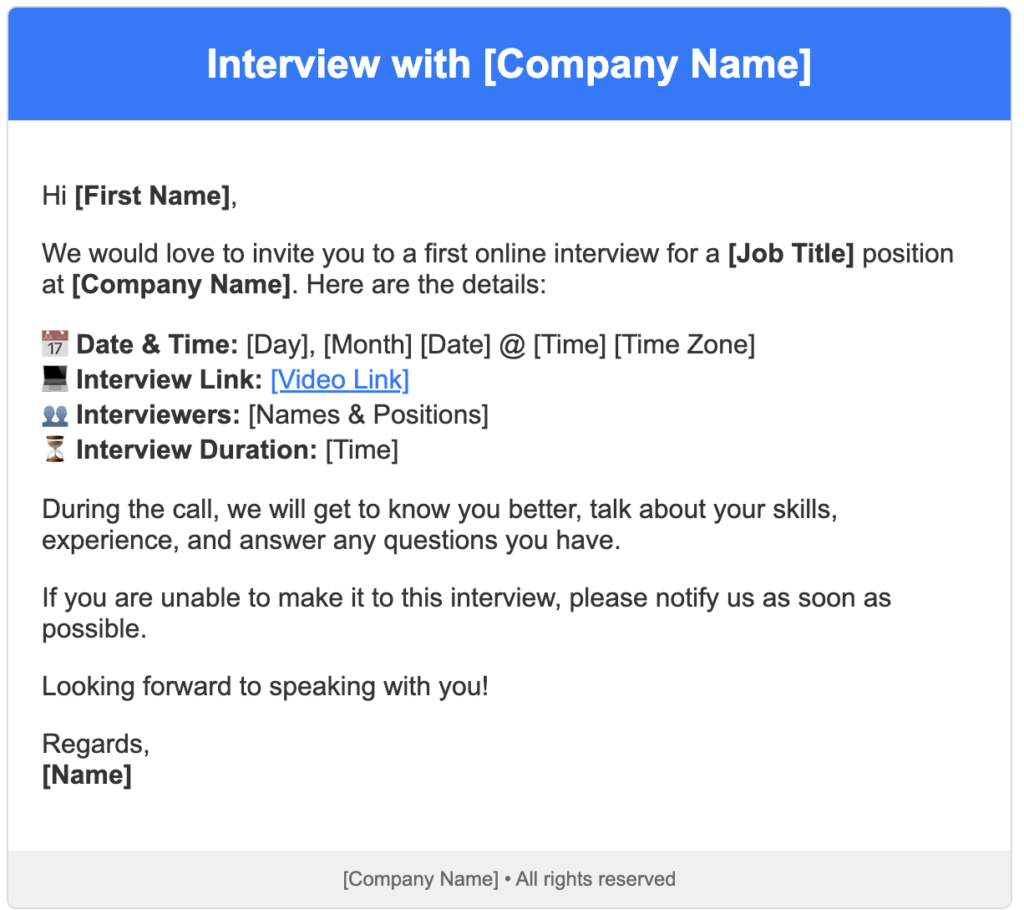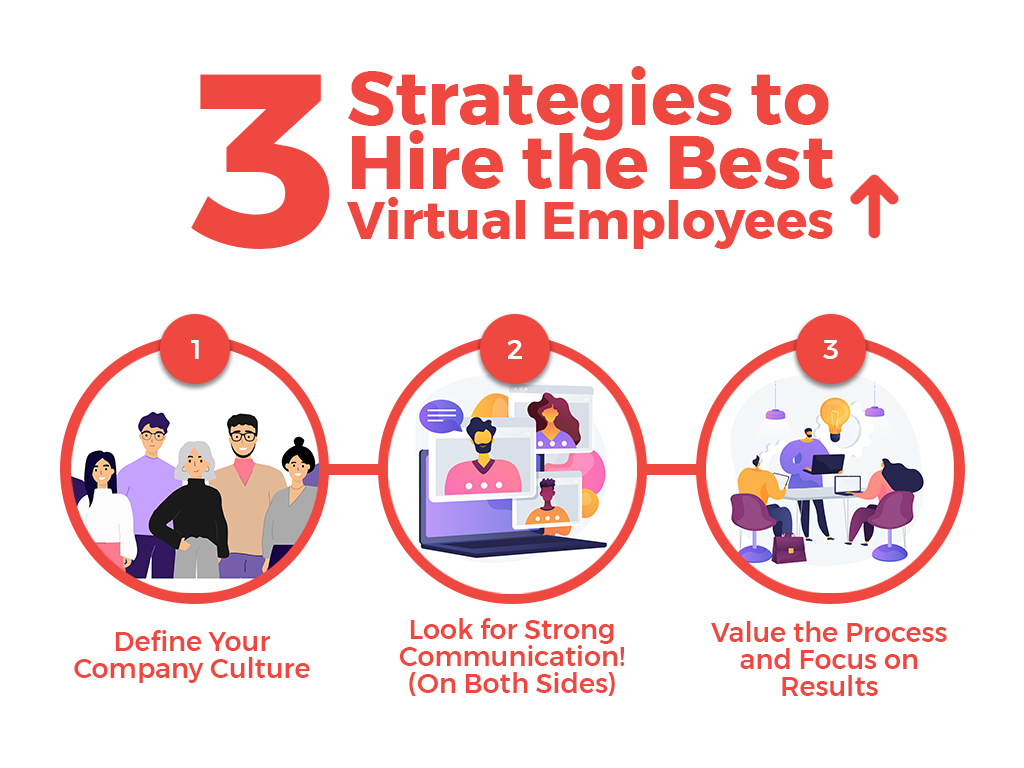You’ve come to your senses, and you’ve realized that remote hiring is the answer. You save costs for exceptional talent, so why not? Plus, it can’t be that difficult to hire remotely because everyone wants to work from home. With fully remote job postings rising from 10% in early 2023 to about 15% by the end of 2024, it’s clear that flexible work arrangements are here to stay. In fact, 56% of hiring managers say that working remotely has gone better than expected, highlighting the potential of remote teams when hired well from the start.
The truth be told, the process of remote hiring can be frustrating and time-consuming. Every remote employee has certain skills, such as communicating clearly, working independently, and managing time efficiently, making them get results and achieve the team’s goals. But how to know for sure if someone will be an excellent remote employee? The answer is simple: By conducting an effective remote interview, and this is what we gonna discuss in this article.
Why Structured Hiring Matters from the Start
1. Consistency Is Key, and It Predicts Success : A structured hiring process follows a series of pre-defined steps (such as structured interviews and assessment processes) and uses clearly defined criteria for evaluating all candidates.
Research shows that a structured process greatly improves hiring success:
- Structured interviews double the probability of selecting the best employee compared to an unstructured process¹.
- Having a structured interview process can increase your chances of making a successful hire by 46%.
The more accurately you evaluate candidates, the more likely you are to find an employee who fits the position and performs well. This results in:
✔ Higher quality hires.
✔ Better employee performance.
✔ Reduced risk of a bad hire, which can cost up to 30% of an employee’s first-year earnings.
Ultimately, getting it right from the start prevents hiring mistakes that can take months or even years to fix.
2. It’s Fairer and Less Biased: A structured process is more objective and fair, as all candidates are evaluated based on the same pre-defined job-related criteria. This limits the impact of unconscious bias and promotes diversity in hiring.
- Candidates hired based on skill level rather than just their resume stay 9% longer in the company.
- A structured hiring process ensures fairness, increasing the quality of hires.
In short, starting with a structured process improves the chances of hiring the right person based on both quality and fairness.
3. Retention Starts on Day One: Hiring success doesn’t stop at sending the offer letter—it continues with a strong onboarding process.
Research shows that the first few months are when employee turnover is highest:
- 3 in 10 employees leave within six months.
- Companies with a strong onboarding process improve new-hire retention by 82%
- 69% of employees are more likely to stay for at least three years if they have a great onboarding experience.
A structured hiring process that flows into structured onboarding results in employees who stay longer and bring greater value to the organization.
Steps to Start Your Hiring Process Online
Before starting your remote interview process, always evaluate the reasons why you want to hire someone. This will help you establish the exact position and role the new person will have, and it will be easier to look for skills when making the hiring decision.
If you have in mind your ideal candidate with the must-have skills and the desired skills, it’s showtime. Here are the 5 stages of the remote interview process:
1. It All Starts with the Job Description
Have you ever heard that cheesy saying, ‘Eyes are the doors of the soul’? Think of job descriptions as the doors of a company.
When you start with your remote hiring process, you need to make sure that the job ad you’re writing explains clearly what the position is about and what are the skills required. Also, explain shortly what your company does and believes (without making an entire testament). This way, you’ll avoid candidates that don’t have what it takes to apply or candidates that don’t align with your company.
Be careful with the terms you use when writing your job description. According to a study conducted by Indeed, when companies use fun titles such as ‘Guru,’ ‘Rockstar,’ ‘Superstar,’ etc., they scare away potential candidates. Those titles sound fun but a bit unprofessional for some, so it’s better to keep things simple and straightforward.
2. Let the Recruiting Games Begin!
To hire talented candidates, you need an interview process. Start with the basics: create the job description, and yes, post it everywhere you can think of. But also, instead of waiting for the magic to happen, start recruiting.
At DistantJob, as expert recruiters, we are also expert IT headhunters. If you haven’t heard this term before, don’t be scared, we are not going to take your head off. According to the Cambridge dictionary, headhunting means ‘’To persuade someone to leave their job by offering that person another job with more pay and a higher position’’.
Sometimes it isn’t about the money, but it’s about offering a candidate a new world of possibilities. Imagine finding an extremely talented candidate who is working at a company they don’t feel attached to. You offer them the opportunity to work with a company they do like, and voilà, you hired a talented and compromised candidate.
3. Filtering Candidates the Right Way
CV‘s exist for a reason. Before starting the interviews and going through questions or testing a remote candidate’s knowledge, CVs allow you to get a hint if a candidate has what it takes to perform successfully. In other words, it makes you save time. But instead of overviewing a candidate’s CV quickly, it’s important to take the time to analyze it.
At DistantJob, we care about the details of the CVs we share with our clients, so we analyze each profile and double-check key information with candidates before even considering interviewing them. This way, we ensure that the people we send to our clients meet the position’s requirements and would enjoy the job.
Keep in mind that besides analyzing the CV, other key strategies can help you make up your mind when filtering which candidates, such as:
- References: If a CV caught your eye, but you’re still unsure, you could ask for references. Call, for example, their former boss or co-worker and ask them some questions about how the candidates worked or their primary tasks.
- Small project: This depends on what type of position you’re looking for. But let’s say you need a designer. To make sure you like the way they work and to test their abilities, you could ask them to do a small project, like designing an online banner, for example. That way, you see if 1) They deliver on time and 2) They have what it takes to do the job.
5 Stages of the Remote Interview Process
If you think online interviews are awkward, then you’re not the only one. But also, there’s a slight chance you’re doing things wrong.
Online interviews should always be with the camera on; that way, you can establish a deeper connection with candidates instead of just talking like a robot. Also, don’t try to mimic the on-site experience online because, honestly, it’s impossible. Instead of trying to emulate reality digitally, embrace the new virtual setting.
1. Plan ahead
Remote interviews should always be planned out methodologically. This means setting an hour and platform (Meets, Zoom, Skype, etc.) with the candidates. Also, make sure to start the interview, knowing what your objectives are. Just as in virtual meetings (and any other meetings), you have goals you want to accomplish. In this case, it’s to find out if a candidate is a good fit. Ask yourself:
- What does it take for a candidate to be a great fit?
- What skills should they have? (Negotiable and non-negotiable skills)
- What personal traits do you highly value?
- What can this candidate bring to the company?
2. Sending a Clear and Professional Interview Invitation
Okay, after you set your expectations, you need to send a clear and professional interview invitation. This step is usually treated with superficiality, so you need to be very clear in your email invite. One of the most common interview issues we see is candidates showing up at the wrong time.
The invitation should include the following information:
- The date and time of the interview (with time zone information, if the person is in a different location—this is a common mistake, so make sure to double-check the time zone you are providing the candidate. Scheduling programs such as Calendly are extremely useful to make sure that the time zone is clear).
- The link to the video call (Zoom, Google Meet, etc.).
- Who will be interviewing them.
- The length of the interview.
- Any other preparation the candidate should know about, such as preparing a portfolio or taking a coding test or case study.
Here is an example of an email for an interview:

3. Create a friendly environment
Start the interview with icebreaker questions to make the environment smooth, and then continue with the position’s questions.
Both interviewers and interviewees should find a quiet and well-lit spot with minimum disturbance.
As a manager, you should:
- Show up on time.
- Eliminate notification distractions.
- Be ready to give the interviewee full attention.
Remember, the remote interview might not feel very personal, so it is much harder for interviewees to relax
4. Structuring is key
Tell the candidate how the interview is going to be structured. Example:
“We will spend 5 minutes introducing ourselves, about 30-40 minutes discussing your background and skills, and the last 10 minutes will be for any questions you may have for me. After this round, successful candidates will proceed to a final interview with the department lead.”
Now, the candidate is more likely to relax, and you are more likely to use your time efficiently.
When asking questions, try to find a balance between technical questions and behavioral questions to assess their soft skills, which are a must.
5. Keep Candidates in the Loop After Remote Interviews
Tell the candidate what to expect next. If there is a multi-interview process, explain how it works and who they might be meeting.
For example:
“We have a few more interviews this week and then we will be meeting with other team members to discuss. You should expect an answer by next Friday.”
This ensures candidates are not left in the dark. If there are delays, be sure to notify them.
The smoother the interview process and the more updates you provide, the better your employer brand will be.
Struggling with Your Remote Interview Process?
We know remote hiring can get frustrating. As a business manager, you need a close-knit team to grow and expand your company. Hiring in virtual teams isn’t only about skills and expertise but also about sharing ethics and vision. While someone who fits your company culture can increase productivity and enthusiasm, bad hires are expensive, drain energies, kill productivity, and, in the long run, drag the company down.
In fact, a CareerBuilder survey shows that 74% of companies reporting an average of $14,900 in lost income simply hired the wrong person. No matter how established your organization is, bad hires negatively affect your productivity and your team, especially in a virtual environment, where bonding and communication are crucial to building trust and establishing a productive flow.
These are the 3 virtual hiring key strategies you should keep in mind when scaling your team:
3 Strategies to Hire the Best Virtual Employees
1. Define Your Company Culture
At DistantJob, we have written a lot about culture (and discussed it on our podcast) because it’s really what makes a difference in a company. How team members work together doesn’t depend only on technical skills. Kinship and affinity are equally important, especially in the long run. Can you think of Frodo without Sam to help him out?
Before hiring a new team member, you need to understand your existing team culture, your beliefs, and the purpose of your company. Ask yourself:
- Which is your company’s vision?
- What culture dynamics are you seeking for your team?
- How will your values help your company’s growth?
- What is the plan for the company’s growth?
- What kind of people will I be able to work with daily?
People come from diverse locations and backgrounds, especially with virtual teams. With the spread of digitalization and globalized industries, international teams are almost a requirement for many remote businesses. Diversity can be a winning card, but you still need people who can communicate with each other. When looking for a new remote team member, look for what we call a good culture fit.
These questions are important to understand at which stage you’re at. Starting the hiring process in wartime is damaging as much as a bad hire, especially when people don’t understand each other. In virtual teams, defining your culture is the first step to attracting people who can see themselves in the company and are not just looking for a job to pay the bills.
2. Look for Strong Communication! (On Both Sides)
Hiring virtual employees for dislocated teams requires even more attention to communication than office settings. How a candidate interacts with you and other team members is a key indicator for future collaborations.
When someone often looks away from the camera, you already know that you’re dealing with someone quite shy. If the next one is sitting too relaxed, you know this candidate is fairly confident – or arrogant?
Both personalities can be great. The real question is: Which one is more likely to integrate quickly with the rest of your team?
During a video interview, you can already spot communication skills. Even through a screen, you can study body language and the attention in answering your questions. Hiring a virtual employee also means being a good storyteller to illustrate your mission. Communicating culture helps to find the right language to attract candidates sharing your values.
Being clear and upfront about your core mission will screen out non-cultural fit candidates likely to lose interest soon or over time.

3. Value the Process and Focus on Results
One of the main questions related to remote work is how to monitor employees. On these eight working hours, an average team member produces around 3 hours. Main reason? Distractions.
A team member sitting on a chair for eight hours without moving from the computer isn’t necessarily productive. As DistantJob’s President Sharon Kofiman stated in his book Surviving Remote Work: ‘If we can’t measure time, what can we measure? And along the same line of questions: What is the bottleneck? what we should be measuring is the output, the amount of work produced, and the bottleneck, in this case, is the distraction.’
During the remote hiring process, be specific about your goals and what you want from the role. Rather than pushing on working hours, ask your candidates their usual methodologies and tools. Delivery time can change based on expertise and experience. Focussing on the quality of deliveries and due dates, rather than counting every minute, is a better strategy to help your team members manage time and avoid distractions.
If you communicate well your values and mission, as we said at the beginning, your candidates will be already interested in your vision; when you find someone who can really communicate with your team, you will never need to count hours — you will just see the results!
Last Thoughts on Remote Work
The research we mentioned at the beginning showed how bad hires impact companies’ incomes. The worst part is that a bad hire not only affects your budget but also wastes your time and energy.
At DistantJob, we take care of everything. Our headhunters can find exceptional talent for you and your team. We look for candidates that not only match the skills you’re looking for but also integrate with your company’s culture and processes.
If you don’t have the time to start with a remote interview process, but you want to hire the best talent, we are here to help you find the best remote tech candidates!





